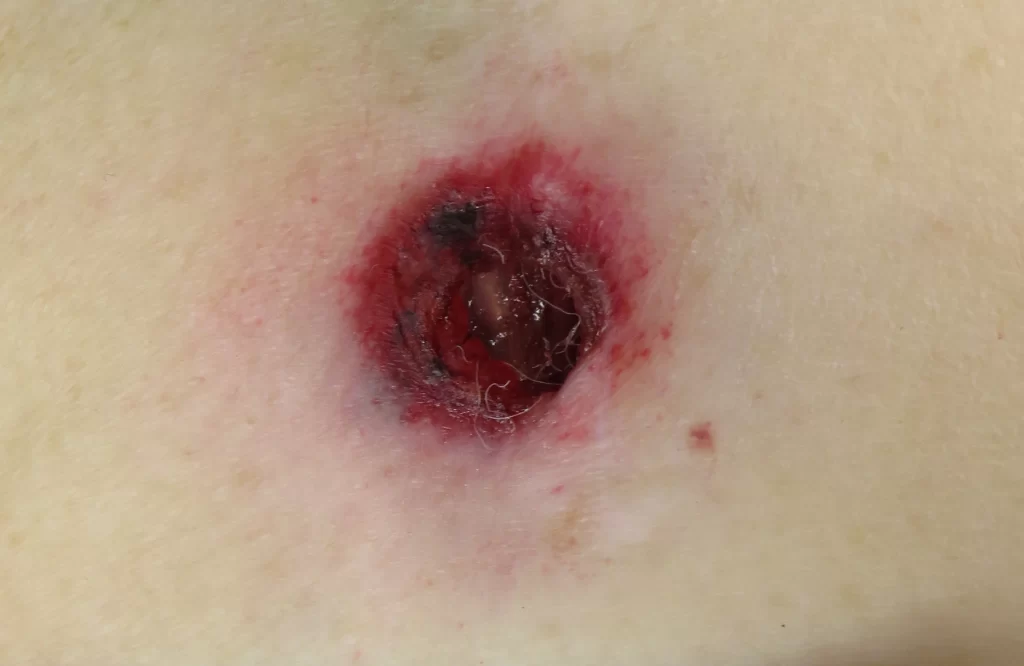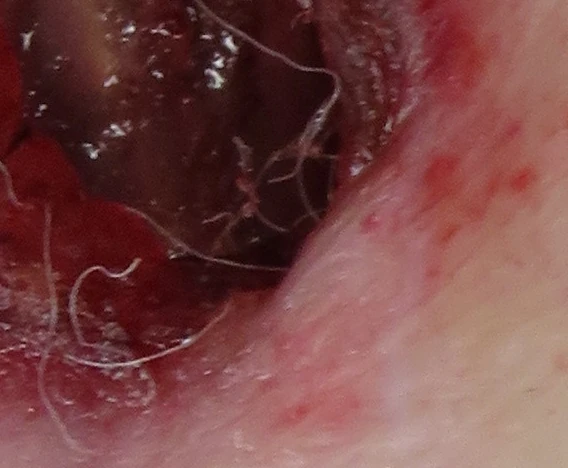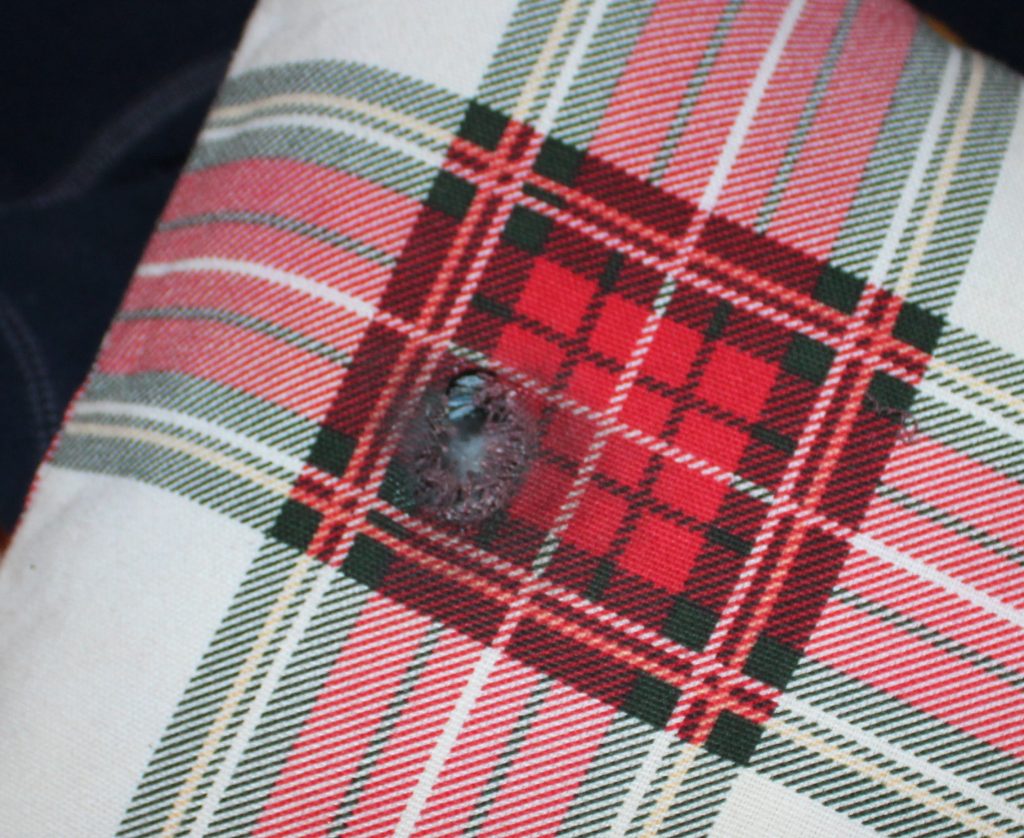Here is an interesting case of a gunshot wound with mildly unusual residue. This is a young man who shot himself in the chest through a pillow with a handgun. A suicide note and paperwork for disposition of belongings were present at the scene. Soot was noted on the pillow, but none on the wound. However, the wound did contain textile fibers consistent with pillow contents. Here’s a picture:
Here’s a close-up of a portion of the wound, showing the fibers:
Here’s a picture of the pillow:
It’s always useful to look for things that correlate with the scene in a case like this. In addition, it also points out the value of good photographs. I didn’t notice the fibers on initial visual examination — my eyes just aren’t what they used to be. But they really popped out on the photos. Some folk would argue that we should look at every injury with a magnifier, but in today’s world where you have ten zillion cases per day for each pathologist in your average office, you can only spend so much time on each case.
Forensic pathology is blessed with ancestral pathologists who understood the dangers of trying to do too many cases in a day and established standards that limited the number of cases a forensic pathologist can do for accreditation purposes. Unfortunately, the shortage of forensic pathologists is forcing offices to bounce up against (and beyond) that limit. In my own practice, I can tell that there is a difference in thoroughness for each case when I have a lot of autopsies and exams to get through in a day. What’s worse, I’ve seen that I tend to develop bad habits when I have a string of very busy days, and I have to “relearn” taking my time with a case when I have a slow one. Forensic pathology is a fascinating subspecialty, salaries are rising, lifestyle is good, and there is a huge demand. Any younger pathology residents or medical students reading this should talk to an older forensic pathologist about the work. There are some interesting little-known facts about the specialty as you get older that are truly a bonus, but nobody talks about. But that’s a different discussion.
As an aside, the dark spots around the edge of the wound are *not* made of soot. They are drying artifact. I have noticed that younger pathologists are often quick to call a close range wound when it really isn’t. But that’s another story, also.


